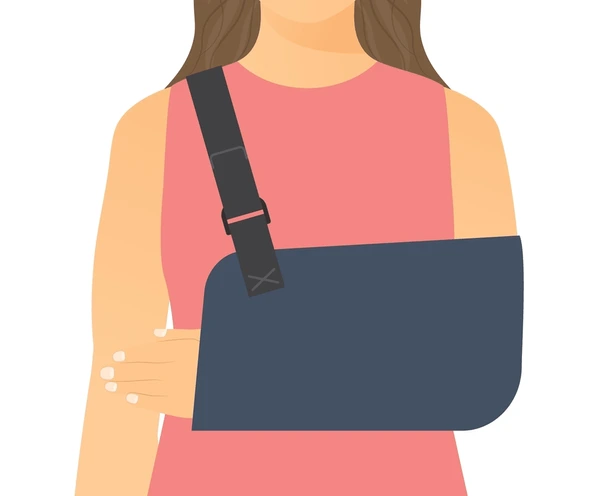There are several types of acromioclavicular (AC) separations. Low grade injuries (Type I and II) involve limited injury to the AC joint only and should be managed conservatively. In contrast, high grade injuries (Type IV, V, and VI) involve injury to the AC joint, coracoclavicular (CC) ligaments, and overlying fascia and should thus be managed surgically. There is considerable debate, however, about type III injuries. A type III separation involves injury to both the AC joint ligaments the CC ligaments. This results in complete separation between the acromion and clavicle, and treatment for this type is controversial.

Radiograph of type AC separation (right of image)

Some authors have reported good results with non-operative treatment of type III injuries. A 1996 study by Rawes and Dias reported that 29 of 30 patients had a good or excellent result in the long-term despite the AC joint remaining dislocated. A prospective study by Schlegel et al. reported that patients with a type III separation lost an average of 17% of their bench-press strength and 16% of patients felt their outcome was suboptimal with non-operative management. Thus, many surgeons recommend surgery for younger active patients and non-operative treatment recommended in lower demand patients.A recent advancement has been the use of shoulder arthroscopy to treat AC separations. With this technique an arthroscope or camera is used to look into the shoulder joint to identify additional pathology that may require treatment and the scope is used to facilitate AC joint repair.We published a study in the January 2014 issue of Arthroscopy with demonstrated that a very high percentage of patients with type III separations had additional pathology within the shoulder that required treatment (See Article). Among 98 patients, 42% had additional injuries such as rotator cuff tears or SLAP tears that required treatment. This is not surprising given that the force of injury required to injure the AC joint is quite substantial. Moreover, this may explain in part why open techniques which do not evaluate the AC joint have not been substantially better than non-operative treatment.With the arthroscopic approach, the shoulder joint is inspected for additional injury and then the AC joint is restored by securing the coracoid to the clavicle.
- A drill guide is placed under the coracoid under direct view and a tunnel is drilled between the clavicle and the coracoid.
- A strong suture tape is then passed between the two bones to restore the AC joint and allow the CC ligaments to heal.
- In chronic cases a graft can even be passed arthroscopically around the clavicle to supplement the CC ligaments.
The advantage of this approach is that it is less invasive than an open approach, it allows precise creation of the coracoid tunnel and it allows treatment of an additional injury/pathology within the shoulder joint. I currently use this approach with a device called the Dog Bone which as of this writing is the strongest technique available. I also use a graft to supplement the Dog Bone button. I have had good success with approach as have my colleagues. We have recently completed a study in which we have a very low complication rate and high success rate with our technique.
Similar posts



